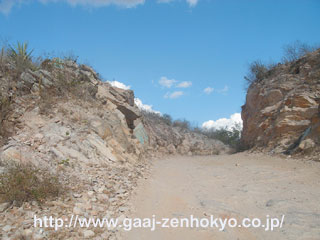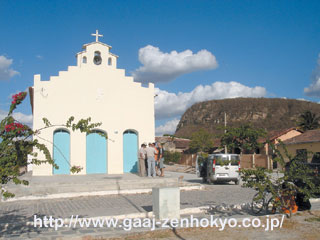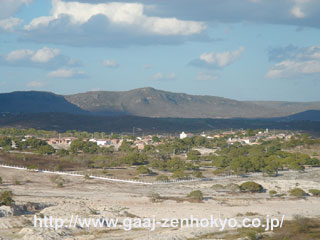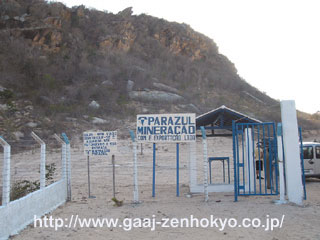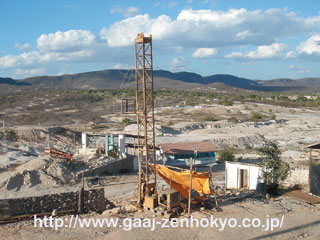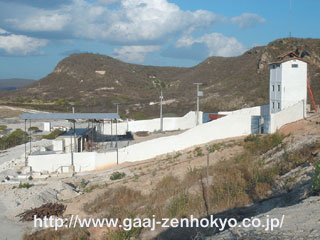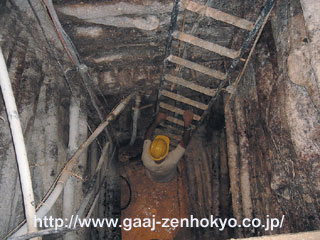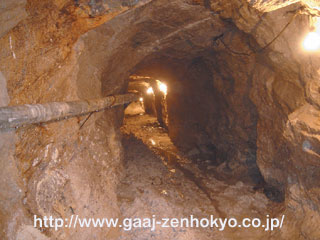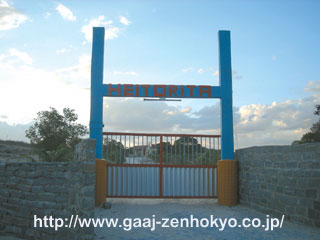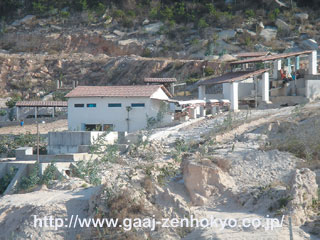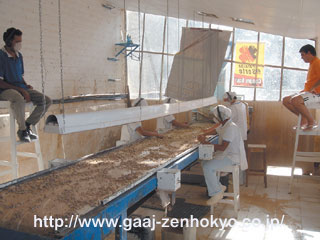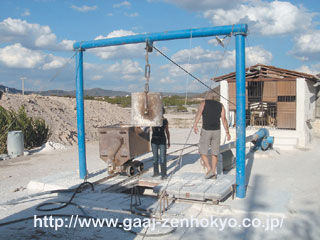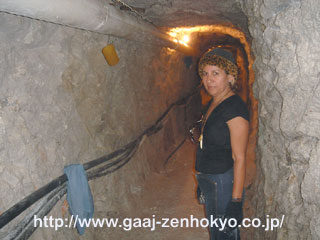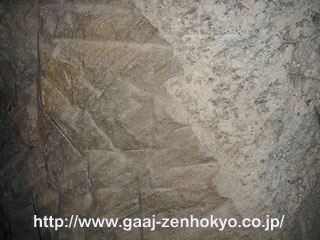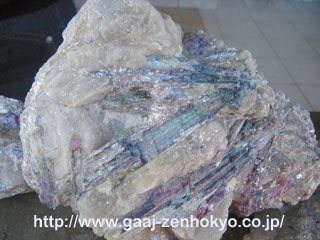| ♦Paraíba state♦ Mina da Batalha mine (São José da Batalha region) This mine is located about 50 kilometres apart from Parelhas as the crow flies. The roads in the area are not paved, and except dry-season, heavy rains in monsoon season make the weathered roads sludge to toughen driving a car. The nearest town to the mine is Batalha with a population of about several hundreds, which presents beautiful scenery spreading around a church. This place is where gParaíbah tourmaline was first found in 1982. It is written that Mr. Heitor Barbosa with thirteen miners found tourmaline in the area where Geological Survey of Brazil was mining manganotantalite. Several years later in the summer of 1987, highly saturated blue tourmaline was found by Mr. Heitor Barbosa from weathered pegmatite vein, followed by a discovery of gem quality green tourmaline in several kilograms, which was cut into several hundred carats. This blue to green material coloured by copper (Cu) ion was first traded in the gem market in Brazil in 1988, and after the exhibition at the Tucson Gem Show it sprang into fame. The production of gParaíbah tourmaline peaked between 1990 and 1991, but then the output has been limited after its property dispute. Currently the mine is owned three-way split by Mr. Heitor Barbosa, Mr. Raniere Addario and Mr. João Henrique, and they all operate each mine actively. Each split area has employee of about ten, thirty and fifty. The pegmatite in this area also is consists of feldspar that is mostly of albite, quartz, muscovite and tourmaline. Unlikely to the two mines in Rio Grande do Norte, most part of feldspar has been altered into soft and white clay called kaolin. At least six veils of pegmatite have been confirmed in this mining area and each of them are numbered and called gLineh. The veins found and operated by Mr. Heitor Barbosa were Line 1 and 2. Most of pegmatite has been turned to kaolinite so that mining was done by hands in the shaft, except occasional use of electric tools and dynamite. Heavy equipments such as bulldozer are used to transfer sediment broken up from the mine.
♦Summary♦ The author has visited Batalha mine in Paraíba state and adjacent Mulung and Quintos mines in Rio Grande do Norte state in Brazil. Several dozens of staff were working in each mine and their mining has been operated actively. Mulung mine produces the highest output among them, but most of the output is small pebbles. Quintos mine has been producing limited amount in the last twelve months but its mining operation is systematic. Batalha mine has three competing mining areas and new shafts are aggressively exploited. Total production of the mines is assumed to fill most of Japanese demand for gParaíbah tourmaline. Acknowledgements The author appreciates the owner Mr. Hideki SAKAMAKI of GLORIOUS GEMS and Mr. Zaheer A. Ansari of NOOR GEMS JAPAN LTD. giving me the opportunity to visit and inspect the mines. Author is grateful to people involved in mining operation for providing the information on mining, and also to Mr. Daylor-Addario of Mulung mine, Mr. Peter Rudy of Quintos mine and Mr. Raniere Addario of Batalha mine for providing me precious samples. |
||||||||||||||||||||||||||||||||||||||||||||||||||||||||||||||||||||||||||||||
|
||||||||||||||||||||||||||||||||||||||||||||||||||||||||||||||||||||||||||||||
